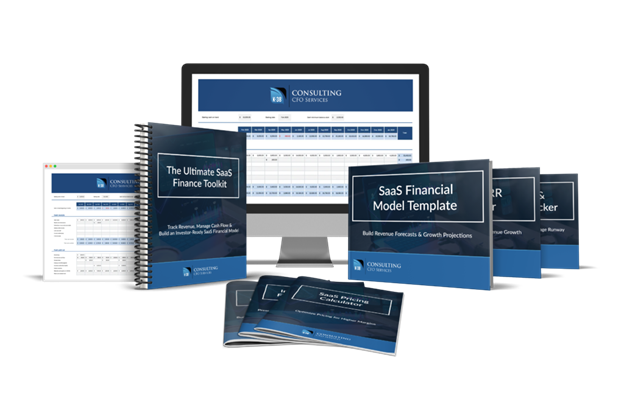
Building a SaaS business goes far beyond writing code, onboarding users, and improving features. True success depends on whether the company can grow sustainably and manage its finances effectively. Many SaaS startups fail not because they lack product-market fit, but because they lack financial clarity and strategic planning. That is why using a structured SaaS financial model template is essential for founders who want to scale confidently and avoid running out of capital at critical moments.
A financial model provides a clear understanding of revenue patterns, cost structure, customer value, and future cash needs. It transforms assumptions into measurable forecasts and helps founders plan decisions with confidence.
Why Financial Planning Matters in SaaS
SaaS companies operate on a recurring revenue model, which means customers pay monthly or annually for continued access to the platform. While this creates stable revenue over time, it also makes financial planning more complex. The value of each customer is realized gradually, not immediately, which is why understanding long-term revenue projections is so important.
Financial planning helps SaaS founders:
- Understand how many customers are required to reach profitability
- Manage marketing and acquisition costs effectively
- Predict future revenue and runway
- Avoid cash gaps that slow down growth
- Prepare compelling financial information for investors
Without clear financial planning, growth can become unstable and unpredictable.
Key SaaS Metrics Every Founder Needs to Track
Unlike traditional businesses that focus primarily on sales and profit margins, SaaS businesses must track performance through several recurring revenue metrics:
| Metric | What It Measures | Why It Matters |
|---|---|---|
| MRR (Monthly Recurring Revenue) | Predictable monthly subscription revenue | Shows revenue stability and growth velocity |
| ARR (Annual Recurring Revenue) | Recurring revenue over a year | Helps evaluate long-term business scale |
| Churn Rate | Percentage of customers who cancel | High churn destroys long-term revenue |
| LTV (Lifetime Value) | Total revenue expected per customer | Determines how valuable each customer is |
| CAC (Customer Acquisition Cost) | Cost of gaining one new customer | Helps evaluate marketing and sales efficiency |
The relationship between LTV and CAC is especially important. If LTV is not significantly higher than CAC, scaling will become expensive and unsustainable.
The Importance of Churn Control
Churn is one of the biggest threats to any SaaS company. Even if new customers are being added consistently, losing existing customers reduces total recurring revenue. More importantly, high churn signals deeper issues such as:
- Poor user experience
- Ineffective onboarding
- Weak customer support
- Misaligned pricing
- Lack of product value
Financial modeling helps quantify the impact of churn and plan strategies to reduce it. Increasing retention by even a small percentage can significantly improve overall revenue and growth.
SaaS Financial Model as a Strategic Growth Tool
A SaaS financial model is not just a forecasting tool — it is a decision-making framework. It allows founders to test different strategies before applying them in real operations.
For example, founders can analyze:
- What happens if pricing increases by 10%
- What happens if customer churn decreases by 2%
- How runway changes with a slower or faster hiring strategy
- How much capital is needed to reach a new growth milestone
This kind of scenario modeling reduces risk and improves decision-making accuracy.
Why Outsourced CFO Services Help SaaS Startups Scale
In the early stages, most SaaS startups do not need a full-time CFO. However, they do need financial expertise to build accurate models and manage growth strategically. Outsourced CFO services, like those offered by K-38 Consulting, LLC, provide founders with:
- Financial forecasting and budgeting
- Cash flow management
- Key performance metric dashboards
- Fundraising preparation and investor reporting support
- Guidance on pricing strategy and revenue growth planning
This gives startups the benefit of professional financial leadership at a fraction of the cost of hiring internally.
Building Investor-Ready Financial Forecasts
When seeking funding, investors evaluate not only the strength of the product but also the clarity of the business plan and financial structure. A professional financial model demonstrates:
- Revenue and scaling potential
- Efficiency of customer acquisition
- Timing of profitability
- Responsible use of funding
- Long-term growth sustainability
A transparent, credible financial model strengthens trust and increases the chances of receiving investment.
Final Thoughts
Financial clarity is one of the strongest advantages a SaaS startup can have. It turns uncertainty into predictability and guesswork into strategy. Whether it’s managing churn, scaling marketing efforts, planning hiring, or preparing for fundraising, a structured financial model keeps growth stable and sustainable.
Using a proven SaaS financial model template helps founders make informed decisions, avoid cash flow challenges, attract investors, and scale confidently. When financial planning is done right, SaaS startups can grow faster, stronger, and with greater long-term stability.
